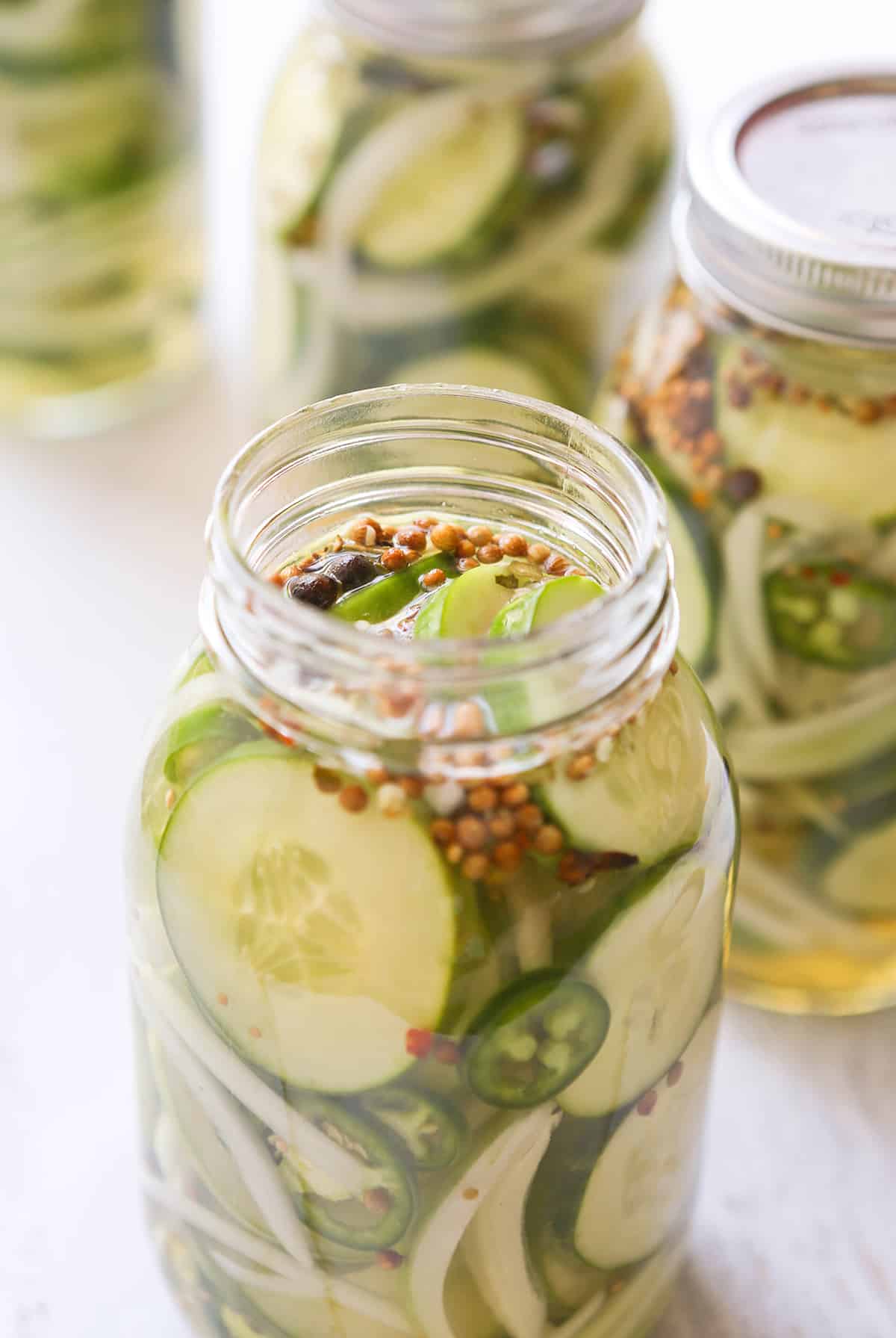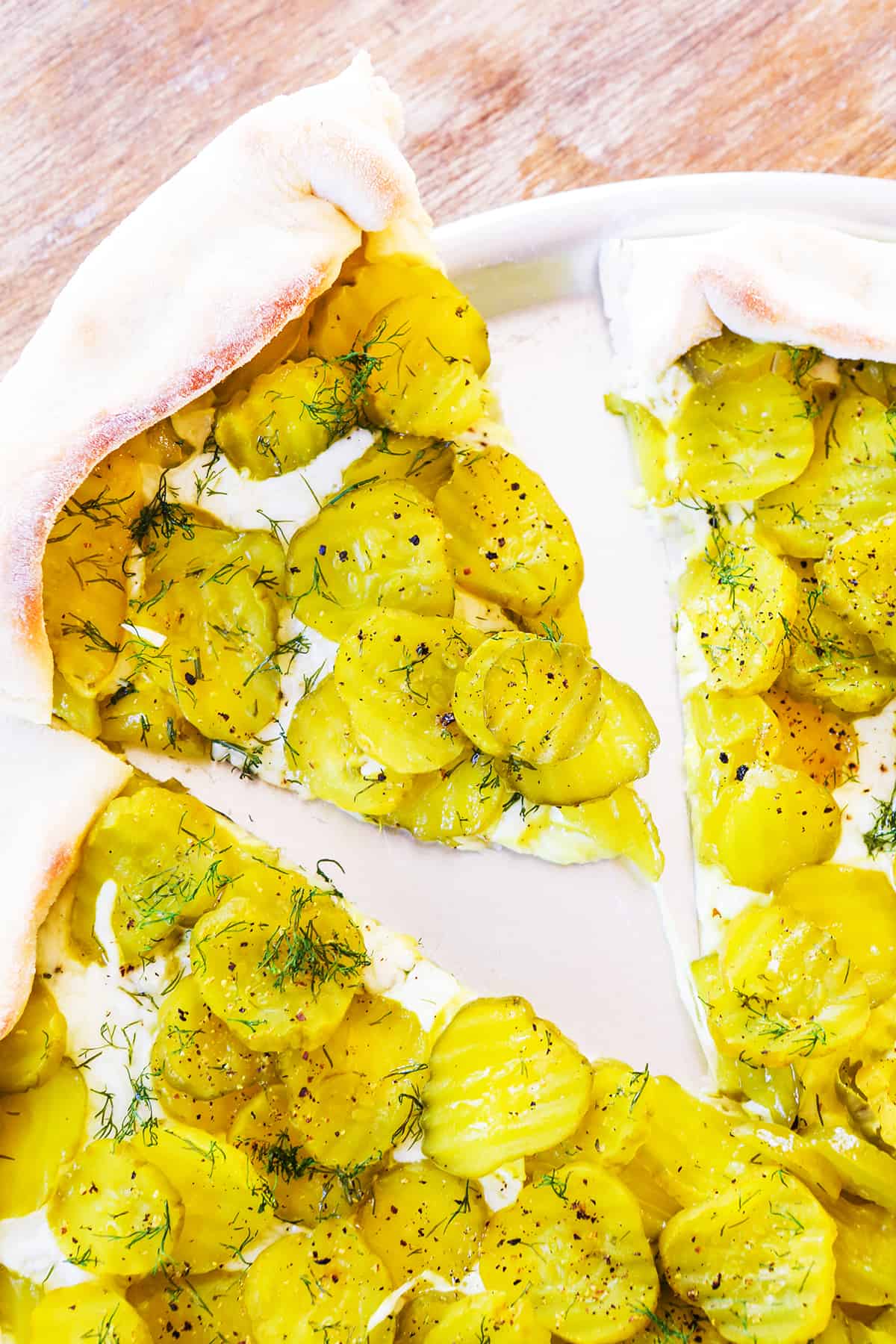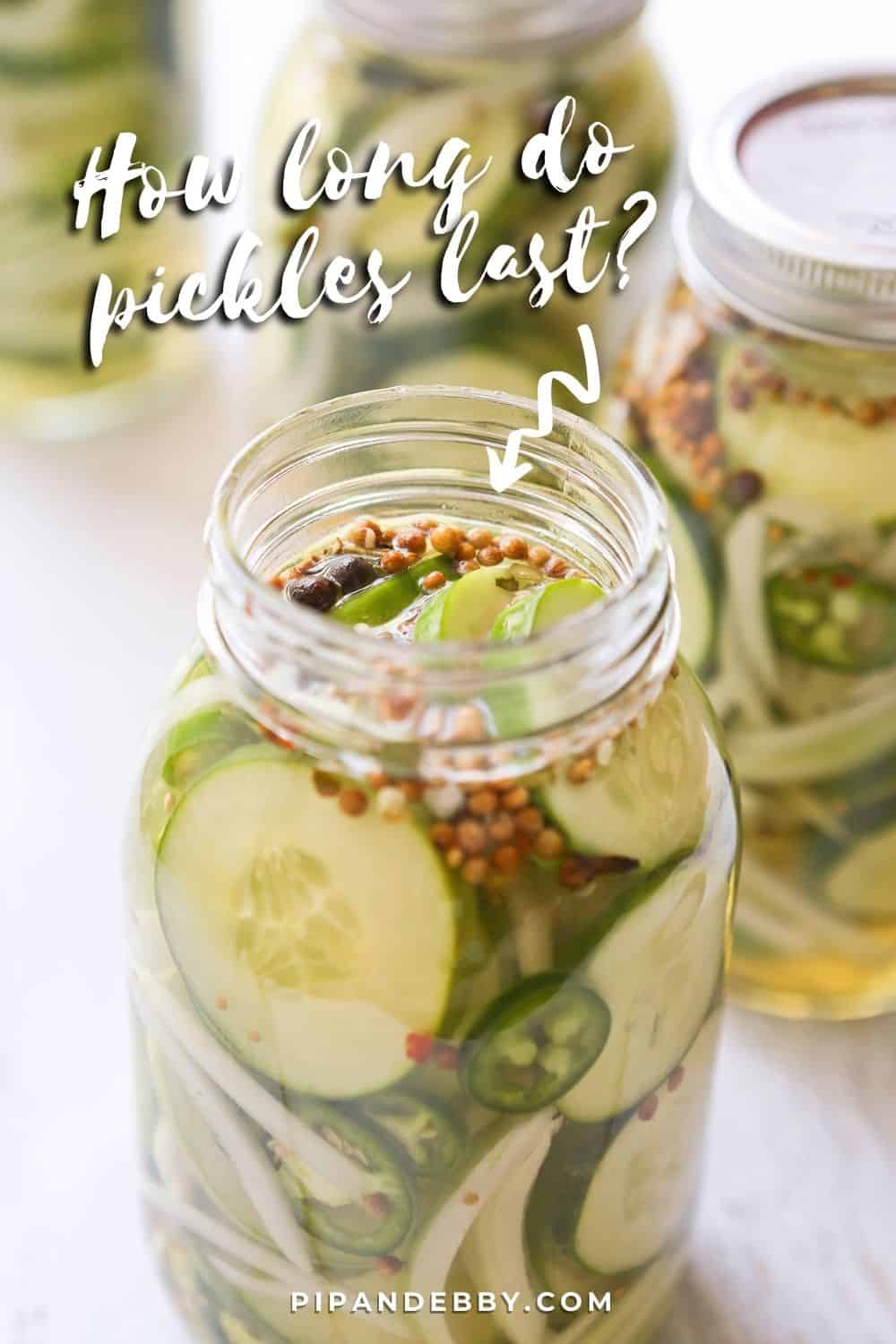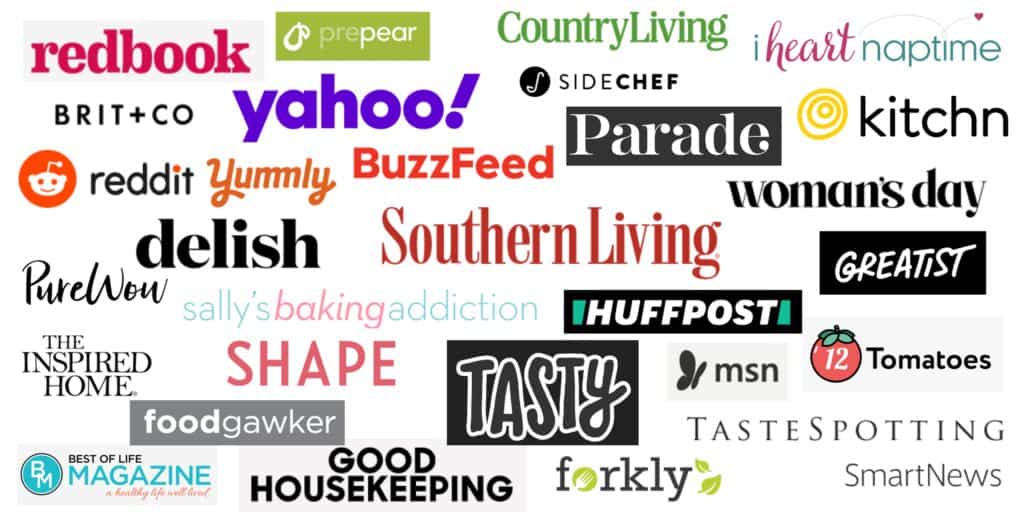How long can pickles last unrefrigerated? If you have a jar of pickles staring at you and you are wondering whether to toss or eat.. read on! These are one of the most common condiments on the planet, so educate yourself and enjoy.

We have multiple jars of pickles in our pantry and fridge at all times. We are a pickle-loving family! And luckily, they are one of those well-preserved food items that have a long shelf life, so there is seldom reason to worry about them being too aged.
Pickles are a staple food, am I right? Whether served alongside a grilled cheese sandwich, or stacked on a juicy burger or eaten solo as a crunchy snack, I believe that every fridge should be stocked with them at all times.
Let’s break the refrigeration situation down so you feel comfortable with the pickled cucumbers you are consuming. It’s stressful to wonder whether or not you’re eating spoiled food, so allow us to help you eliminate this worry.
How Long Do Pickles Stay Fresh In The Pantry
First of all, let’s address another subject — unopened pickles and how long they last. When canned and sealed properly, an unopened jar sitting on a pantry shelf, basement, dry place or anywhere at room temperature will last for 2 years or beyond. Two years! It’s a miracle!
If you’re planning on storing up food for an upcoming zombie apocalypse, this would be a good food to have on hand in plenty.
Also, we should address expiration dates because especially for a long-lasting food such as this one, you can think of the expiration date as a mere suggestion. Most likely, they will remain fresh well beyond the date written on the jar.
How Long Can Pickles Last Unrefrigerated
What about the situation, though, when you have broken the seal on the jar and leave it at room temperature? How long can pickles last unrefrigerated?
They will, and there are ways to tell if they’ve spoiled (more on that in a bit) but it is much safer to store them in the refrigerator after the seal has been broken. Pickles will still last years when opened, then stored in the fridge.
Whether left out at room temp for a few days or sitting on shelf refrigerated for a long time, there are ways to tell when they have indeed gone bad.
When Pickles Go Bad—How To Tell
There are two main signs of spoilage, letting you know when a batch of pickles has gone bad and contains harmful bacteria. Consuming old pickles can be a health threat, so ensure you are eating safe pickles.
- Moldy pickles. The best way to determine if there is growth of bacteria is when you can see visible mold growing inside the pickle jar. This means that they should not be consumed.
- Smelly pickles. If you remove the lid and smell an unusual odor that is either sour or rotten, discard the entire jar.
If it’s just the vinegar and pickling ingredient you smell and everything looks visibly “in order,” eat away!
How To Make Homemade Pickles
Start with fresh cukes and slice them however you’d like.
Follow this recipe for sweet quick pickles as your base!
In a large bowl, combine the cucumbers, red onion slices and peppers (if using). Mix well. Stuff the contents of the bowl equally into two 1-quart mason jars.
In a medium saucepan, combine the sugar, cider vinegar, white vinegar, spices and kosher salt. Bring to a boil and reduce heat to Medium. Stir until the sugar has dissolved, approximately 3 to 5 minutes.
Divide the vinegar mixture between the two sterilized, hot mason jars (place in a hot water bath, aka, boiling water bath, or run through the dishwasher). Fill jars with cold water, if needed, so that the cucumbers are completely covered with liquid.
Screw the top of the lid onto glass jars and set in a cool place. The lids will pop to create a sealed jar. Refrigerate for a minimum of 1 hour or up to 2 months.

FAQ About Pickles
Pickles are very low in calories, making them a healthy snack. Since the only ingredients are cucumbers, salt and vinegar, one medium pickle contains a mere 7 calories.
Pickles are made from cucumbers after soaking in a vinegar-seasoning mixture that well-preserves them.
Not all pickles are fermented. Quick pickles are typically not fermented. Most pickles go through a pickling process that produces lactobacillus acidophilus (a probiotic bacteria) out of the cucumbers, salt, vinegar and water. Lactic acid is produced after the fermentation process, which is evidenced by a cloudy brine.
Pickles are made when fresh cucumbers are fully immersed in an acidic pickling solution (a salty brine) until they are fermented.
Pickles are keto-friendly when they don’t contain added sugar. Generally speaking, if following a keto diet, opt for dill or sour varieties and avoid sweet and bread and butter varieties.
Pickles can be considered both a fruit and a vegetable. Since they are made by bathing cucumbers in a brine liquid, they are a vegetable. However, technically speaking cucumbers are considered to be a fruit because of their seeds.
Types of Pickles
- Dill
- Sour
- Sweet
- Refrigerator pickles
- Hungarian
- Bread and Butter
- Gherkins
Ways To Enjoy Pickles
- Enjoy straight out of the jar for a crunchy, low-calorie, salty snack.
- Add slices to your next burger, sloppy joe or grilled cheese sandwich.
- Serve as an easy side dish alongside any type of sandwich, with chips or fries.
- Add 1-2 tablespoons of pickle juice from the jar to your next bloody mary cocktail.
- Finely chop or turn into relish and add to potato salad or pasta salad.
- Add them in a single layer over your next Friday night pizza.
- Peanut butter pickle sandwiches!
- Toss small chunks into your next batch of egg salad.
- Add them to any meal or side that needs extra salt.
- Roll them up in slices of corned beef with cream cheese spread over top.
Delicious Pickle Recipes




Leave a Reply